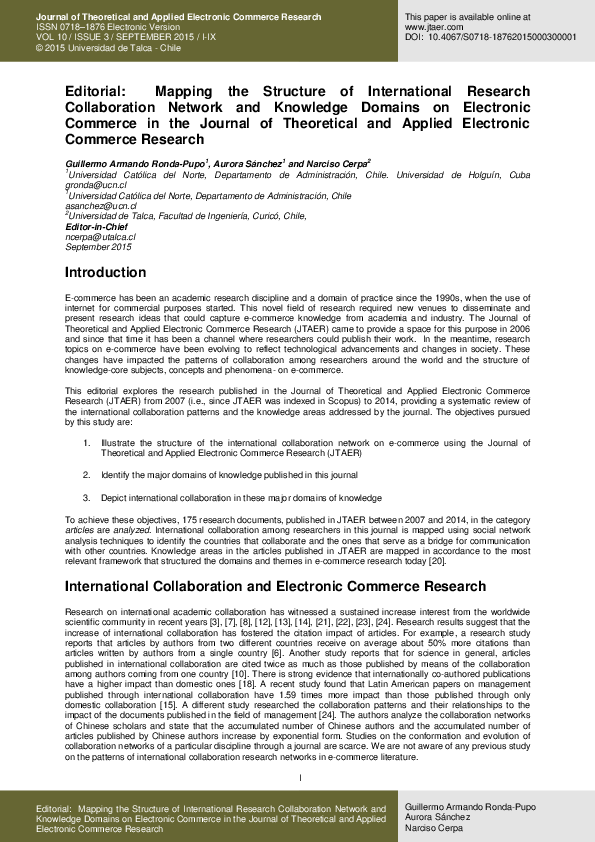Research on B2C Cross-Border Electronic Commerce Return Logistics Model Selection Based on Estimated Return Rate
IF 5.1
3区 管理学
Q1 BUSINESS
Journal of Theoretical and Applied Electronic Commerce Research
Pub Date : 2024-05-10
DOI:10.3390/jtaer19020054
引用次数: 0
Abstract
This paper investigates the estimated return rate and optimal order quantity under three cross-border e-commerce return logistics modes: direct mail (from predecessor), in situ destruction (new), and insurance (new). The estimated return rate under each model was analyzed and it was found that different modes have different thresholds in delivery lead time (the time retailers need to deliver goods to customers), and within which the estimated return rate increases as the delivery lead time increases. And a size comparison of the estimated return rates for the three models was conducted. A profit model was constructed based on the estimated return rate model, the optimal order quantity was calculated, and the effects of different factors (tax, postage, and delivery lead time etc.) on it were analyzed. For the insurance model, the effect of bearing the insurance ratio between retailers and consumers on the optimal order quantity was examined. The goal of this paper was to construct a model of the estimated return rate for the two new modes and to compare the estimated return rate of the three modes, which provides a reference for retailers to choose among the diversified return logistics modes and then make the best ordering strategy according to the influence of different factors on the optimal order quantity.基于退货率估算的 B2C 跨境电子商务退货物流模式选择研究
本文研究了三种跨境电商退货物流模式下的估计退货率和最优订单量:直邮(前身)、原地销毁(新模式)和保险(新模式)。分析了每种模式下的估计退货率,发现不同模式的交货前置时间(零售商需要将货物交付给客户的时间)有不同的临界值,在临界值范围内,估计退货率会随着交货前置时间的增加而增加。并对三种模式的估计退货率进行了规模比较。在估计退货率模型的基础上构建了利润模型,计算了最佳订货量,并分析了不同因素(税收、邮费和交货周期等)对其的影响。在保险模型中,研究了零售商和消费者之间的保险比例对最优订货量的影响。本文的目的是构建两种新模式的估计退货率模型,并比较三种模式的估计退货率,为零售商在多样化的退货物流模式中进行选择提供参考,进而根据不同因素对最优订货量的影响制定最佳订货策略。
本文章由计算机程序翻译,如有差异,请以英文原文为准。
求助全文
约1分钟内获得全文
求助全文
来源期刊
CiteScore
9.50
自引率
3.60%
发文量
67
期刊介绍:
The Journal of Theoretical and Applied Electronic Commerce Research (JTAER) has been created to allow researchers, academicians and other professionals an agile and flexible channel of communication in which to share and debate new ideas and emerging technologies concerned with this rapidly evolving field. Business practices, social, cultural and legal concerns, personal privacy and security, communications technologies, mobile connectivity are among the important elements of electronic commerce and are becoming ever more relevant in everyday life. JTAER will assist in extending and improving the use of electronic commerce for the benefit of our society.

 求助内容:
求助内容: 应助结果提醒方式:
应助结果提醒方式:


